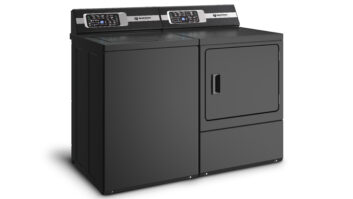CD Radio, one of two companies planning satellite digital audio radio (SDAR) service, changed its name to Sirius Satellite Radio and completed construction of its 100,000-square-foot national broadcast and production studios in Manhattan.
The company plans to launch the first of three satellites in 2000 and will begin offering 100 channels of programming to consumers in late 2000.
SDAR competitor XM Satellite Radio plans early-2001 commercial service.
Sirius adopted its new name “to create a stronger, clearer brand name” as it approached the commercial launch of service, said senior marketing VP Ira Bahr. “The old name had some confusing and limiting aspects to it.”
Some people misunderstood CD Radio for CB radio, marketing VP Terrence Sweeney told TWICE, but “probably the biggest reason for changing our name is that CD refers to a particular technology that isn’t associated with our service.” In addition, he said, “CD is but one digital technology that’s not necessarily the most cutting-edge technology. Back in 1990 when we coined the name, CD was just exploding on the scene.”
The new name refers to the brightest star in the sky in the constellation Canis Major, the company said.
From its Manhattan studios, Sirius will create original programming for the service’s 50 music channels, record live performances and radio dramas, monitor and control the service’s three satellites, and store 4.2 terabytes of programming on hard drives for delivery to the satellites.
Sirius is creating music programming rather than leasing its channels because “we want quality control, given the $9.95/month subscription fee,” said marketing VP Terrence Sweeney. Sirius programmers include longtime classic rock DJ Pat St. John, and famous artists such as Sting are creative consultants.
Up to 50 channels of commercial news, sports, talk and entertainment programming are also in development. Entertainment programming will include radio dramas developed for the service by cable TV’s Sci Fi Channel. Classic radio dramas such as “The Shadow” are also planned. Other content partners include NPR, Bloomberg News Radio and C-Span.
Sweeney stressed that the music channels would be commercial-free and said, “the number one attribute [cited by consumers in proprietary research] is commercial-free music.” Following closely behind are digital sound, more programming choices, and the ability to travel long distances without service interruptions.
Three Loral-designed and -built satellites will be launched next year by a division of Lockheed/Martin on a Russian-made Proton rocket from Kazakhstan. The first launch is scheduled for January. All three will circle the globe in a North-South orbit, but at any one time, two will be broadcasting simultaneously above the U.S.
The satellites’ orbits ensure that at any one time, one satellite is a minimum of 60 degrees above the horizon line everywhere in the country, in some places as high as 80 degrees, Sweeney said. The second satellite will be a minimum of 40 degrees above the horizon.
In most cases, the orbits will deliver unobstructed reception of the satellites’ line-of-sight broadcasts. In 45 markets across the country, however, the company is building a total of 105 terrestrial repeaters to fill in coverage gaps caused by tall buildings or mountains, he said.
Sirius would have required thousands of terrestrial repeaters if the company hadn’t decided about two years ago to change its original plans for two geostationary satellites hovering over the equator, Sweeney said.













